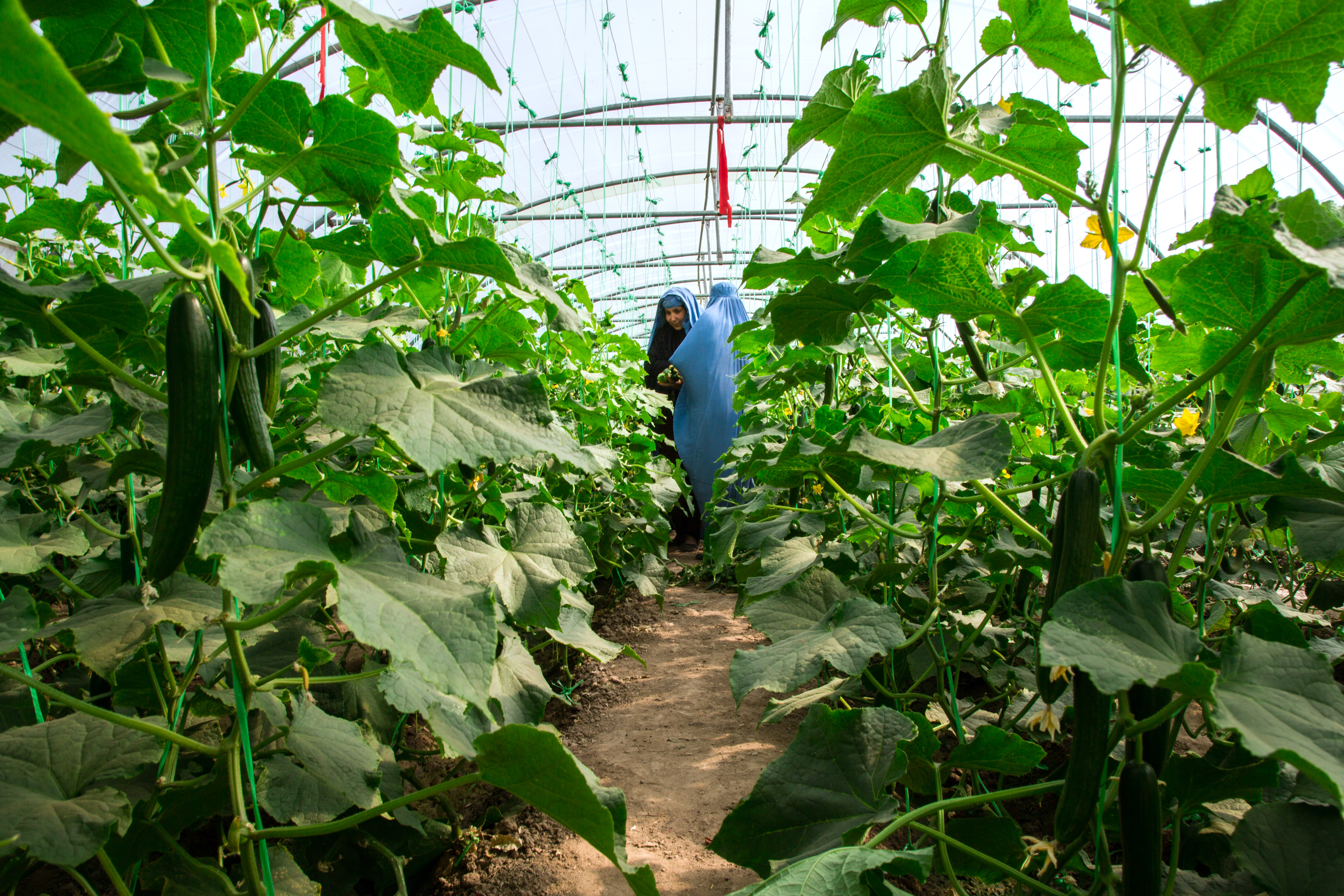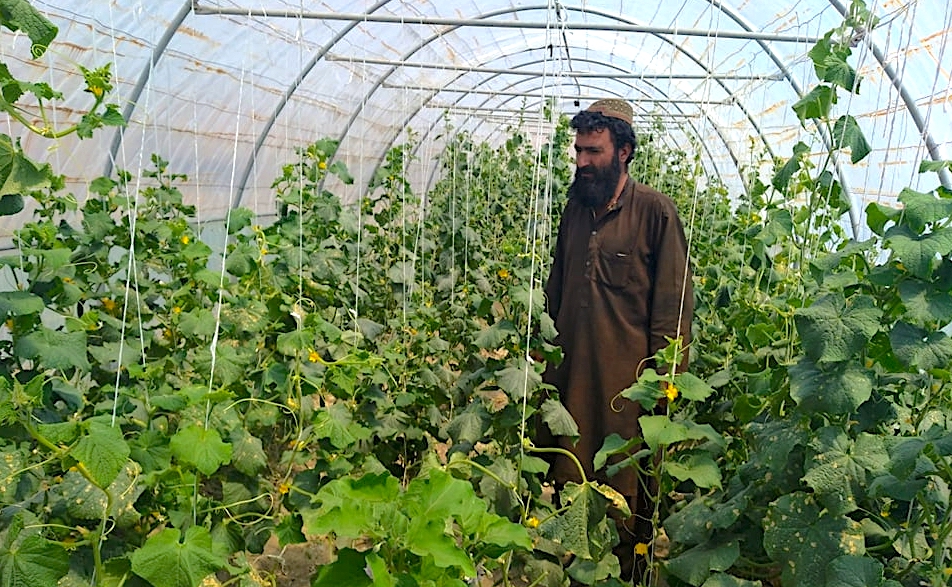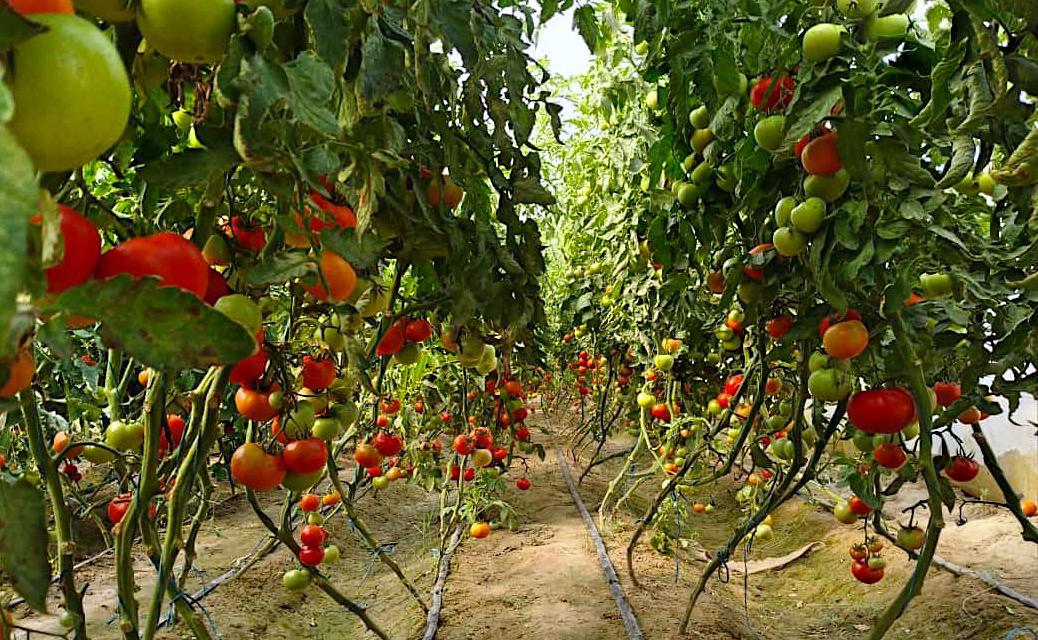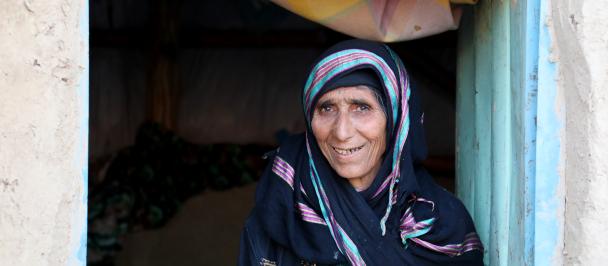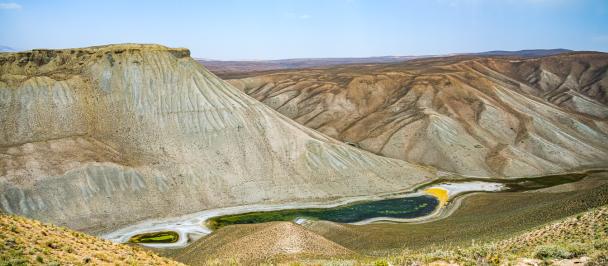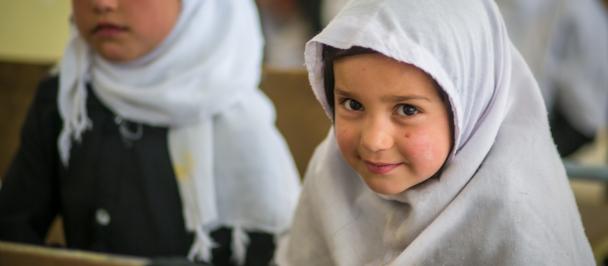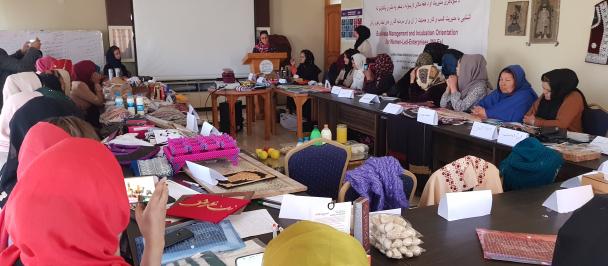A UNDP Afghanistan's supported greenhouse to diversify livelihoods and improve women’s economic freedom. © UNDP Afghanistan / S. Omer Sadaat
Ghormach, located in the North-West region of Afghanistan, is one of the largest districts in the Badghis province. It is home to approximately 60,000 people, majority of which depend on agriculture as their main occupation. The district used to be rich in its production of crops that included pistachio, melon, wheat, sesame seeds and chickpea but the growing incidence of droughts in recent years has forced a large bulk of the population to turn to opium poppy cultivation, as it’s growth requires less water.
Poppy cultivation involves a highly labor-intensive process requiring entire families to work, causing not only physical, but mental fatigue. Despite the hard work, the harvest still does not earn enough profit. One reason why poppy cultivation is less profitable is that it reduces the land’s fertility. Consequently, farmers cannot cultivate twice a year and require more fertilizers the subsequent year.
To counter these issues, UNDP initiated the Community Based Agriculture and Rural Development (CBARD) project to help villagers reduce their economic dependence on poppy cultivation. Since its inception in 2018, the project has led to the construction of 70 greenhouses, covering a total area of 1.425 ha of land (30 commercial greenhouses and 40 micro greenhouses) in the Ghormach district.
UNDP's CBARD supported greenhouse in Ghormach of Badghis province. Photo: UNDP / CBARD / 2020
UNDP's CBARD supported greenhouse in Ghormach of Badghis province. Photo: UNDP / CBARD / 2020
“In the past, poverty and drought forced people to either migrate to neighboring countries or to cultivate poppy." said Ghiasuddin, one of the project beneficiaries in Ghashozai Bala.
"Yet, we were barely able to survive. Life was tough for the farmers”.
The CBARD project helped Ghiasuddin obtain the essential training for vegetable cultivation processes, pest control, weeding, greenhouse management and product marketing. He is thus able to generate a reliable income by planting vegetables such as cucumbers, tomatoes, eggplants and green peppers. While previously being able to cultivate only half of his land and spending heftily on fertilizers, pesticides and laborers, Ghiasuddin can now harvest around seven tonnes of tomatoes during the summer in his 404 sqm. greenhouse. This has nearly doubled his annual income while using a fraction of the land, allowing him to utilize the autumn season by growing cucumbers and other vegetables.
Since it’s initiation, the CBARD project has aimed to design it’s interventions to be increasingly gender inclusive but cultural and security concerns often limit the incorporation of women in several activities. To counteract, CBARD has introduced micro-greenhouses (60 sqm. each) to enable women to grow crops inside their homes.
Humaira is one such beneficiary from the Meyan Teerak village in Ghormach district. A mother of four kids, she used to cultivate poppy on 0.6 ha of the land that she owned. Yet, despite her entire family working on this land, the income was barely sufficient to fulfill their basic needs. However, with a micro-greenhouse, she’s been better able to support her family as she now only works on 60 sqm. piece of land (as opposed to 0.6 ha) and doesn’t have to involve her children in the manual labor.
She now has spare land that she can utilize and earn an additional income. “Now, my children can go to school and I can afford my daily necessities”, says Humaira.
Currently, the CBARD is active in three provinces of Badghis, Farah and Nangarhar, where it has built hundreds of commercial and micro greenhouses for former poppy farmers. The project is constructing irrigation systems and orchards which have tremendously helped in reviving local economies and promoting high value crops as a more profitable alternative to opium poppy, resulting in around 58 ha of land now being utilized in the production of grapes, walnut, pistachio and apples.

 Locations
Locations